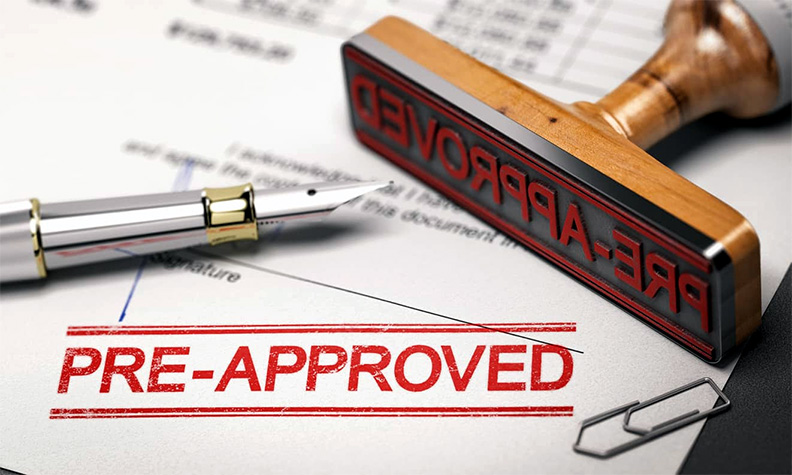
Risks of Taking Out Long-Term Business Loan
Long-term loans are the kind of financing that companies use to make larger investments in their business. The long-term funding is one of the traditional forms of financing. It offers liquidity to the business with a long-term return in the form of periodic installments. The purpose that long-term business loans can cover is extensive: from debt refinancing to investment in machinery, or other assets, through international or national expansion projects, for instance, or funding of liquidity positions in long terms. The typology of existing loans in the industry is very wide and is a product flexible enough to adapt it to the business’s long-term needs.
Generally, long-term loan repayment of amounts owed is made in one or several years. These types of financing can amount to significant amounts, and thus, in most cases, it is vital to cover the risk through guarantee or guarantees. These loans do offer some financing advantages for businesses. Provided you do not want to give up some of your ownership to investors; you can utilize long-term business loans to finance growth. Nonetheless, carrying a high level of long-term debt can present risks and financial difficulties in your ability to thrive.
Cash Flow
A significant disadvantage of long-term debt is that it restricts your monthly cash flow in the near term. The higher your debt balances, the more you dedicate to paying on them each month. This indicates you have to use more of your monthly earnings to repay debt than to make new investments to grow. It also restricts your ability to build up a safety net of cash savings to fund unexpected business costs.
Vulnerability
Together with the potential for property loss, long-term business loan leaves you vulnerable to the ebbs and flows of the marketplace. As long as your sales decline unexpectedly, it becomes difficult to fund your monthly labor and overhead costs while also making debt payments. If you start to miss payments, you accumulate late fees and hurt your business’s credit. Moreover, the inability to keep up with current debt makes it difficult to convince lenders to provide you new debt. At the extreme, you could face debt default and potentially bankruptcy.
Collateral Risks
Much of a long-term business loan is tied to collateral. You usually have to utilize the property as security to get funding, mainly at reasonable interest rates. Building loans, for example, are secured with your property as the collateral. In the event you are unable to clear the debt, you could lose the property to the lender. The same issue arises with company equipment and cars. Once you start to lose assets through repossession, it becomes difficult to dig your way out of the financial mess.
Stifles Growth
Linked to your limited free cash flow is more stagnant growth. To expand, your company needs the ability to invest earnings and extra cash into new research and product developments, new buildings and equipment, or other acquisitions. It is also more challenging to attract more customers because you don’t have as much money to invest in marketing. This is where you communicate your company’s benefits and products to grow your customer base over time.
Greater Interest Cost
The higher rates alone for a long-term business loan mean that you will pay more over the life of the debt than you would for a short-term loan, and that is exacerbated by the period you will be paying the higher interest rates. Typically, a shorter loan has less time for the interest to accumulate. For example, a loan for $50,000 at a rate of four percent annually over ten years will include paying $10,747.60 in interest. Even at the same interest rate, the same loan amount will include $22,717.60 in interest payments when paid over twenty years.
Higher Interest Rates
The interest rates accessible for a long-term financing agreement are often higher than the rates available for shorter-termed business loans. Typically, the interest rate level is established depending on the risk involved with making the loan. The long-term business loan includes a greater duration for default. A shorter-term business loan is less risky to the lending institution. It is simpler to predict a borrower’s financial status in the short term than it is to be certain the borrower will have the capability to satisfy the loan payments decades down the road.
Debt-to-Income Ratio
Accessing credit involves an evaluation of your total financial picture. Incorporated in that picture is your debt-to-income ratio. This is the amount of outstanding debt you owe in association to the amount you earn. The longer the terms for your business loan, the longer you will have a big number in the “debt” section of your creditworthiness assessment. On the contrary, a shorter-term loan enables you to pay faster and lower your debt.
Not all businesses will qualify for a long-term business
There are many strict rules and conditions that banks and traditional lenders have in place when it comes to approving or rejecting long-term business loan applications. Not all companies will meet the criteria laid out by the lenders. So, you will have to know how the lenders analyze applications before you go ahead with your application. The least you need is to waste your time on an application if there is no chance of it being accepted by a particular lender. Dealing with a loan rejection can be hard to bounce back from too. You can be justify wondering where you should look next to get the money your business needs.
A business might not be granted all of the funds it requested
Another thing long-term business loan lenders do when responding to loan applications is only grant some of the funds that are requested. They might think that a business does not need all the funds that it is asking to lend. It is not uncommon for banks to approve a loan on the condition that only 70-percent or 80-percent of the money is given. This can be frustrating for truth; it’s a headache for many business owners who already have full cost plans in place. It can force them back to the drawing board to cut costs and find ways to carry out their plans in a more affordable way.
You may have fewer options for who you borrow from
If you want a really long repayment timeline, such as a loan you pay off over a decade, you will have fewer choices for who to borrow from than if you want a loan that is repaid over just a few years. When you do not have a wide selection of lenders, you could end up with a loan that has a higher interest rate or other unfavorable terms such as prepayment penalties.
Are long-term business loans good options for businesses?
The main benefit of long-term business loans is simple: The monthly payments that come with them are quite small. If you want to borrow $50,000 from your bank to fund your small business, it makes financial sense to break that amount of money into smaller monthly payments. It is far simpler to pay back that $50,000 over twelve monthly payments stretched across ten years than it is to come up with the sum all at once. The drawback, as discussed earlier: You will end up paying significantly more than $50,000 over the life of your long-term loan, thanks to interest.
Qualifying for a long-term business loan
Lending institutions want to be as certain as possible that you will pay back your long-term business loan on time. That is the reason they will make you submit copies of important financial documents, such as your checking account statements, bank savings, the last three years of federal income tax returns, and your most current work paycheck stubs. They want to ensure that you have sufficient financial stability to make your loan payments per month. Lenders will also need you to submit a written business plan when you apply for a long-term business loan to finance the start of a new business; they want to ensure that you have a reasonable plan for accumulating income. If you do not, your odds of defaulting on your loan are far higher in lenders’ eyes.
How do lenders make money on long-term loans?
Lenders make solid revenue on long-term loans thanks to the interest rates they charge. Each time you send your lender a monthly payment, a large chunk of your dollars will go toward interest instead of principal. For example, mortgage lenders make a sizable amount of money thanks to interest. That is because they are lending a lot of money to their borrowers. Generally, with such a large sum of money stretched out over thirty years, even a relatively modest interest rate of five percent can generate a significant amount of money for lenders. Despite all the discussed disadvantages of long-term loans, it does not mean long-term loans are bad. These loans offer higher loan amounts and competitive APRs, and they allow you to spread out your repayments over more time. This can assist you to afford a larger loan while keeping your monthly payments low.












